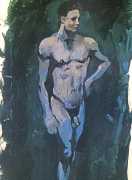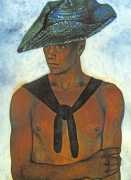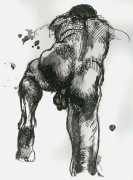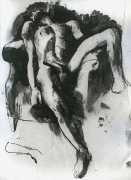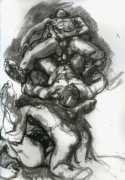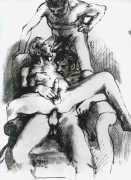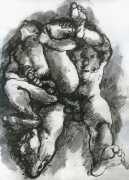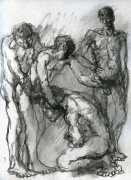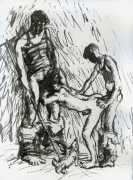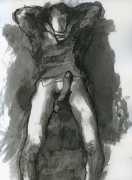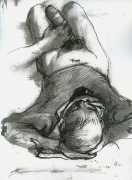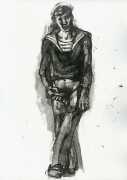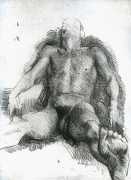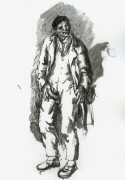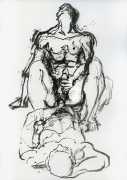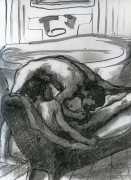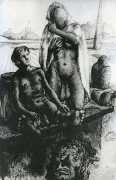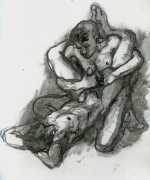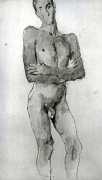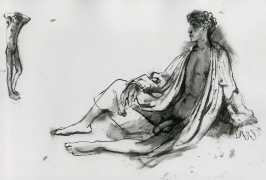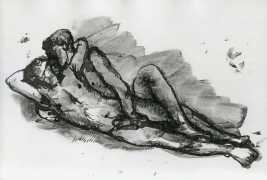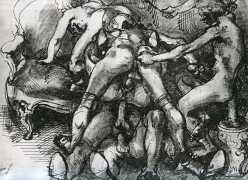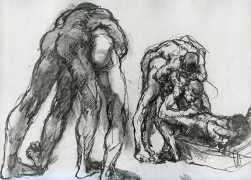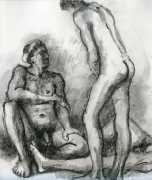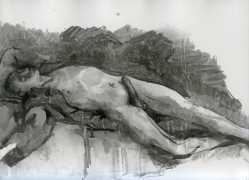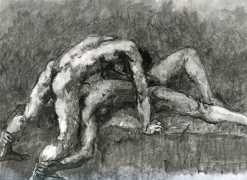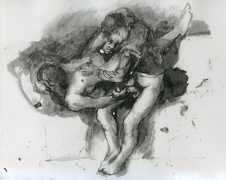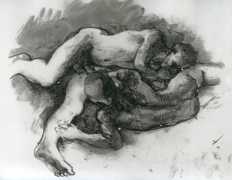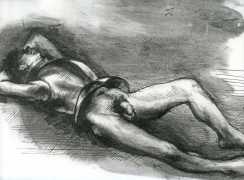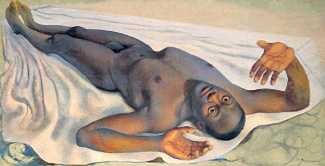
The homoerotic drawings of Pavel Tchelitchev appear to have only spanned the period from 1929 to 1939. They can be divided into three categories: male nudes, either alone or with others; magical scenes with unusual figures or costumes that evidence a dreamlike quality; and true erotica with two or more figures engaged in a sexual act.
In the first category, there are many in which the model appears to be sleeping. Charles Henri Ford has indicated that ‘Tchelitchev loved to paint people sleeping. They are the dreamers the Neo-Romantics loved to paint.’ The dreaming figure returns again and again in Tchelitchev’s work, and is indicative of the painter’s philosophy that unseen forces are at work in everyday life.

In his magical scenes, there is less forthright sexual appeal. There is never a sense that these scenes are a prelude to or the aftermath of a sexual encounter. Rather, it is as though the stripping of the body is the first step in the revelation of the life below the surface and suggestive of the essential eroticism in existence.
The third group of drawings depict explicit sexual acts between men, many in groups and some in acrobatic couplings that require the magic of art to be accomplished. In the 1930s the drawings become more powerful, more strongly drawn and more passionate in feeling. This may have been related to the entry of Charles Henri Ford into the painter’s life, who was well aware of the importance of sex in people’s lives. This was an environment that encouraged Tchelitchev to experiment, observe, imagine and explore the world of his own sexuality.
As David Leddick writes in his introduction to the 1999 Elysium collection of Tchelitchev’s homoerotic drawings, ‘The hidden strength of the muscular male body in repose, the regenerative force inherent in the penis, the beauty and flow of the male body that was largely ignored by a world that concentrated almost exclusively on the nudity of the female body, are all focused in these drawings. Tchelitchev’s male nudes live in a dream world, a dream of fulfillment, a dream free of guilt, a dream where the body exists for beauty and beauty has its purpose. These are dreams of consummation, dreams of fleshly delights, the very personal erotic dreams of a great artist.’


